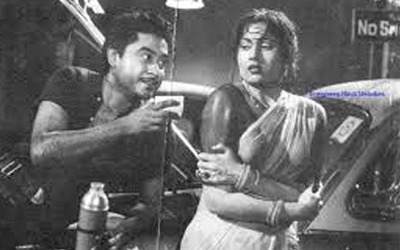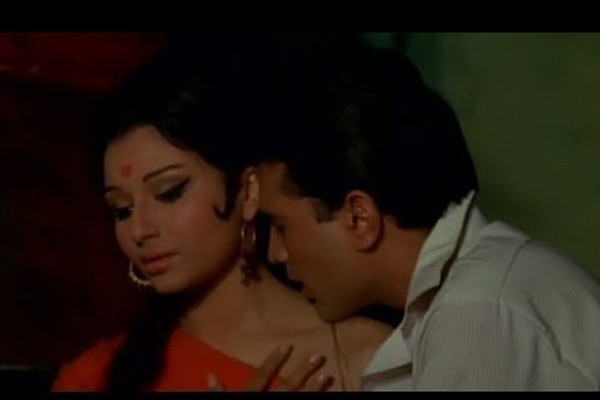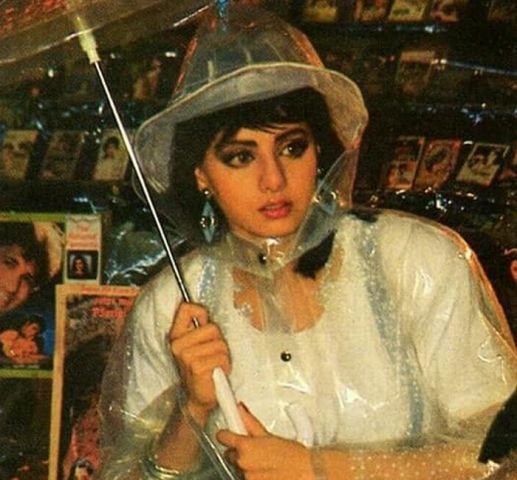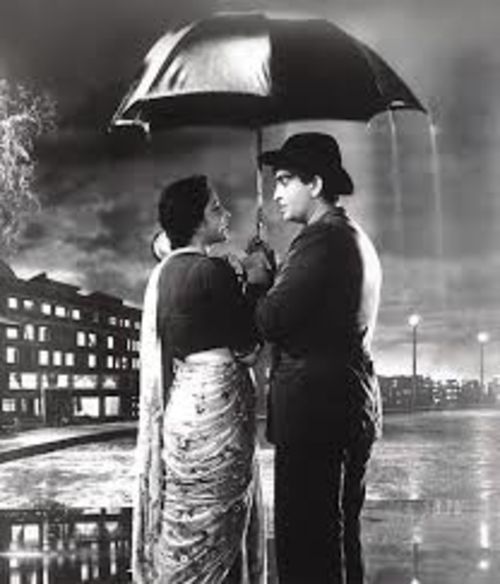Shooting Rain Songs is No Walk in the Park
What goes into filming the ubiquitous rain sequence? Nichola Pais speaks to the artists behind the camera to find out
Many decades have passed since it made a splash, so to speak, on the screen; yet the rain song is yet to lose its freshness in Hindi films. Filmmakers remain captivated by the power of the rain to express a plethora of emotions, whether love and romance, passion and intensity or poetry and sadness. While the moods and melodies vary vastly, the famed rain sequence remains a popular and effective story-telling device, from the evergreen Pyar hua iqrar hua hai (Shree 420, 1955) to Baarish (Half Girlfriend, 2017).
Challenge accepted!
“Rain is a very powerful emotional factor in our lives and so in the films too. It can depict romance, drama, stress, difficulty, soothing atmosphere and many more moods,” vouches Amalendu Chaudhary, Director of Photography of films such as Harishchandrachi Factory (2009), Aiyyaa (2012), Saheb Biwi Aur Gangster 3 (2018), Stree (2018) and Chhichchore (2019). “In fact, the pre-shot announcement of ‘Sound, Camera, Baarish and Action...’ always sends a tingle down my spine. However, to generate the desired result on the screen is a little tedious and demanding as well,” he admits.


Ace cinematographer Ravi K Chandran, known for a slew of films in the Telugu, Tamil, Malayalam and Hindi film industries, confirms, “Shooting rain is basically a difficult job. For starters, water spotting hits the camera lens. That makes the rain deflector, a rotating device fixed in front of the lens which deflects the water drops from the camera, a must. What’s more, in India we don’t have a proper rain machine like they do abroad, which allows the showers to be controlled at the touch of a button, depending on whether you want heavy rain or light drizzle. That leads to a more even spread of rain, which we don’t have access to here. In India we haven’t invested money and technology in developing this process. I find this strange because smoke and rain are very crucial to filmmaking. But for some reason, in India it remains neglected,” rues the DoP of hits like Virasat (1997), Dil Chahta Hai (2001), Yuva (2004), Paheli (2004), Black (2005), Fanaa (2006), and Saawariya (2007).

Incidentally, most rain requirements are met by the film industry’s ‘Rain Man’ – Shiva. Rain sequences apparently survive on Shiva’s understanding and expertise. “Over the years he has figured out the proper ways of creating rain, whether in soap ads or flood scenes. Without him we will simply not get that desired quality,” vouches Chandran.
Lighting up
Shooting a rain scene naturally calls for advance planning, and we’re not talking just the equipment here. Informs Shirish, “Prior to coming on the sets, the entire song or sequence is decided in advance – how to shoot it, where to place the camera. We make several visits to the location to see the possibilities, mark down the angles etc.”
And then, there is that key factor – lighting. Ravi K Chandran cites proper lighting as being of utmost importance. “Basically, you need a backlight to light up the rain alone against a darker background. The foreground is not lit up much, to ensure separation. This is necessary to show the rain otherwise the rain will not be visible. The backlight level needs to be absolutely right otherwise the rain will look artificial. The backlight and crosslight are key to lighting up a rain scene.” He explains that to a newcomer DoP, it might seem like the backlight is less and needs to be increased. However, when shooting begins and the rain comes in, the whole area could appear hazy and washed out. “The spray of the rain catches the light, leading to a whitish effect. After a few initial mistakes, one is able to get it right. Experienced cameramen will test the rain, shooting a couple of takes, before going ahead with proper filming,” he explains.
.jpeg)
He is echoed by Shirish Desai, who avers that the type of lighting depends on whether you are shooting indoors or outdoors, and the time at which shooting is taking place. “If it’s day time then it’s easier as you don’t have to light up the rain but if it’s night, it becomes a little tedious. For day rain scenes, you do need additional light to light up the whole scene and the actors’ faces. Also, if you are creating rain with the help of showers, you have to take care that you are shooting in the shade and not in the sunlight as it looks fake, for the simple reason that sunlight and rain don’t go together. On account of shooting in the shadow, additional lights are needed to model the actors.”
Shooting stars
A well-shot rain sequence does seem to be doubly satisfying to the men filming it. Shirish Desai alludes to the song Rhimjhim rhimjhim (1942: A Love Story, 1994), which he had been roped in to shoot, as the principal cinematographer was unavailable. Picturised on Manisha Koirala and Anil Kapoor, it involved creating idyllic Himachal Pradesh at good old Film City, Mumbai. “We had even brought in the vegetation and flowers of the hills, to make the set look like a hill station,” recalls Desai. “We had to create the rain, the whole atmosphere. The song is set outdoors in the daylight. I shot using mid-shots, almost close-ups along with a couple of wide shots. It went swimmingly well,” he smiles.
.jpeg/WhatsApp%20Image%202020-08-21%20at%205_15_34%20PM%20(1)__480x480.jpeg)
Shower power
Amalendu loves rain sequences so much, he always tries to suggest it to the director as it shows the mood, time of the year, and great atmosphere with sound. “Even a small drizzle contributes a lot. I have done a Marathi film गंध Gandha (The Smell, 2009) directed by Sachin Kundalkar in which one story had rain throughout. I had a great time shooting that story. Also, the climax of my film Nude (2018) directed by Ravi Jadhav was shot on the beach which was also challenging to manage with the time and also with the high tide,” he points out.

Rain and thunder have been used to set the tone for many different moods such as romance, sadness and action. However, the rains in Hindi films are mainly used to depict sensuality, and erotica. “It helps to build the mood,” maintains Shirish, citing the example of Namak Halal (1982)’s Aaj rapat jaye toh rain song featuring Smita Patil and Amitabh Bachchan. Some of Hindi cinema’s most seductive songs have been set against a backdrop of rain. From Sharmila Tagore and Rajesh Khanna in Roop tera mastana (Aradhana, 1969) to Kaate nahin katte (Mr India, 1987), rain is the leitmotif for passion play. “Rain songs are generally used for seduction,” affirms Chandran. “The girl dancing in the rain has been a fixture in films. It was done aesthetically in earlier times, and the songs looked beautiful. However, it veered towards the vulgar in later decades such as the 80s. It was the norm then but now they don’t make films like that.” He personally likes the way the peppy rain song Na jaane kahan se aayi hai featuring a raincoat-clad Sridevi was shot in Chaalbaaz (1989). Shirish Desai singles out O sajna barkha bahar aayi (Parakh, 1960) and Bheegi bheegi raaton mein (Ajnabee, 1974) and Meri jaan mujhe jaan mat kaho (Anubhav, 1971) for being well shot. Besides the more obvious trope of passion, Amalendu likes the way the rain in Akira Kurosawa’s Rashomon (1950) sets the mood of the film with all the characters trapped together. “The silence between the characters gets enhanced with the sound of pouring rain,” he points out, adding that Ijaazat (1987) by Gulzar also uses rain very effectively in the narrative. “It contributes to the present tense in the waiting room where the ex-couple meets and are isolated. You always come back to the present in the waiting room with rain pouring outside and it’s night time.”

However, if rain songs can raise the pulse, they apparently also have the power to cool audiences down. According to Shirish, “Rain comes at specific points in the film when things get heated up a bit. Also, in the 60s and 70s you will find that majority of the films that released in the hot season, had rain scenes to give that feeling of the approaching monsoon and to psychologically help cool down the audiences in times when the cinema halls were largely non-air-conditioned.”
Can’t touch this
Needless to say, the Holy Grail, the gold standard, so to speak, as far as rain on celluloid goes, remains Pyar hua iqrar hua (Shree 420, 1955). Can we ever match that level of brilliance again? If we do, it could only be in a Sanjay Leela Bhansali film, believes Chandran. “In the times of black and white, there was a lot of darkness, shadows and highlights. It was almost like a painting that they were able to pull off. It was all shot indoors on a set. This meant your lighting and other aspects were in your control. What’s more, in those days, they had a lot of time to do a song in a detailed manner. Now we shoot songs in a hurry, within two to three days generally. Those days, a song would be shot over 10 days. That’s why I say that the only person who could do songs like that now is Sanjay Leela Bhansali!”
Amalendu is appreciative of the production design of the song. “The set is a good example of the perspective in a small space and that too with rain. The mood and intimacy between the actors in the rain with umbrella is timeless.”
With the sharpness of the digital format, the more natural blurred effect of the rain as seen in physical film is a thing of the past. Chandran is one of the many who feels its loss. “It isn’t really magical any longer,” he concludes.








.jpg)


